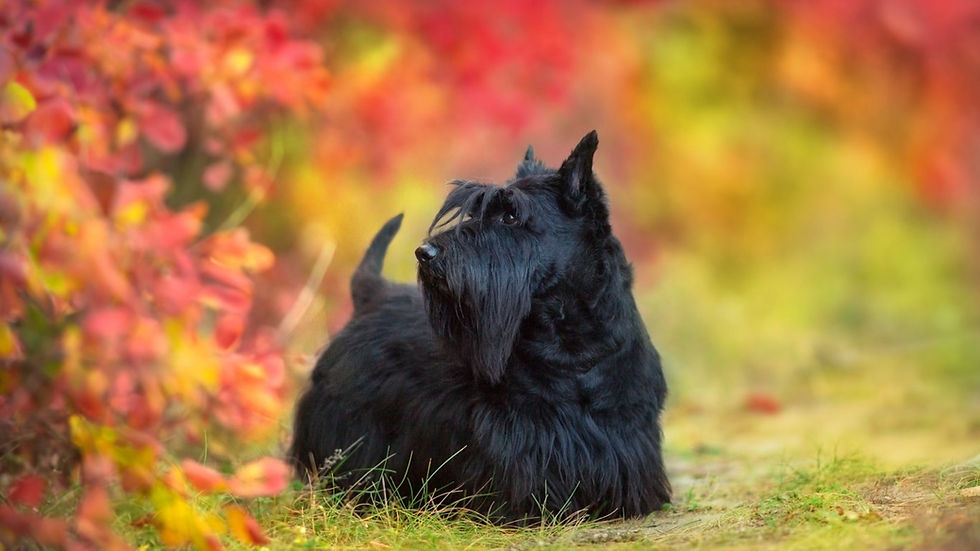Click the tartan to view its entry in The Scottish Registers of Tartans which includes registration details, restrictions, and registrant information.
Unregistered tartans may link to one of the web's online design environments for similar information.
For any questions about reproduction of designs or weaving of these tartans, please contact the registrant directly or via this website.
Ghosts & Phantoms Night
“He who has been fortunate enough once to behold it is enabled to see closely into his own heart and to read the thoughts of others.”
~ The Green Ray, Jules Verne, 1882
A vivid imagination and tricks of the eye can stir up visions of green ghosts and phantoms during the Hallowe’en season. Among them are the famous Green Lady spirits from Scottish folklore! Often appearing with a greenish hue or dressed in a green gown, these apparitions are typically harmless and, in some cases, even regarded as protectors of the buildings they haunt. Green Ladies are said to roam the halls of Stirling Castle, Caerphilly Castle (Wales), Crathes Castle, Fyvie Castle, and Skipness Castle. Other greenish specters, like the ignis fatuus—known as will-o'-the-wisp—are natural phenomena caused by glowing swamp gas, or the cool green flicker of fireflies. Then there's the rare "green flash" or "green ray," an optical phenomenon briefly seen at sunset or sunrise, often observed from a low vantage point with a clear view of the horizon, like the open sea. This tartan brilliantly captures that vivid green flash against the deep reds and oranges of a sunset sky! Have you ever seen this elusive green phantom? Legend says that once you've glimpsed the green flash, you’ll never go wrong in matters of the heart! 💚 🧡 ❤️ 💙 🖤 💛 ❇️ 🌇 👻
The Green Flash tartan represents a non-supernatural atmospheric phenomena that is the equivalent of a green ghost - a seldom seen, fleeting greenish spectre in the sky for those lucky enough to glimpse it.
Green flashes and green rays are rare optical phenomena that occur shortly after sunset or before sunrise, usually observed from a low altitude where there is an unobstructed view of the horizon, such as on the ocean.
This phenomenon was popularized by Jules Verne in his novel The Green Ray (French: Le Rayon vert) in 1882.
In the book, the heroes are trying to observe the green ray in Scotland. After numerous unsuccessful tries caused by clouds, flocks of birds or distant boat sails hiding the sun, the phenomenon is eventually visible, but the heroes, finding love in each other's eyes, don't pay attention to the horizon.
From Ian B. Thompson's "Jules Verne, Geography and Nineteenth Century Scotland":
Verne professed an affection for Scotland to an almost obsessive degree. He claimed descent on his mother’s side from a Scottish ancestor. His mother, Sophie Allotte de la Fuÿe was descended from a Scottish archer, Allotte, in the guards of Louis XI. Secondly, since childhood he had revelled in the writings of Sir Walter Scott and the mysterious past of Ossian and read widely, in translation, Scottish history and literature.
“All my life I have delighted in the works of Sir Walter Scott, and during a never-to-be-forgotten tour in the British Isles, my happiest days were spent in Scotland. I still see, as in a vision, beautiful, picturesque Edinburgh, with its Heart of Midlothian, and many entrancing memories; the Highlands, world-forgotten Iona, and the wild Hebrides. Of course, to one familiar with the works of Scott, there is scarce a district of his native land lacking some association connected with the writer and his immortal work”.
Thirdly, he regarded Scotland as being downtrodden by the English, linking the history of Scotland to his anti-British imperialist views. As a Breton, he empathised with the “Celtic Fringe” of Ireland and Scotland as conquered and exploited lands. Ironically, he sympathised with the view of Scotland founding its own colonies overseas and in Les Enfants de Capitaine Grant, the plot revolves around the search for the lost Scottish sea captain on his mission to claim a territory as a colony. The first visit to Scotland in 1859 exceeded his wildest imaginings and inspired three novels. In addition to these books, Verne was to populate his novels with Scottish figures, who were invariably cast in a romantic and heroic mould, especially as seafarers and explorers. Huet calculates that 27 Scots feature in 10 novels, while Humeau suggests a figure of 40 Scots in total with major or minor roles. With this profound affection for Scotland and admiration of its people and culture, it is unsurprising that three of his novels should be set in Scotland.
Above is a photo sequence (by Brocken Inaglory) showing the green flash observed in Santa Cruz, California
By designer Carol A.L. Martin, the Green Flash tartan illustrates the bright green spot and ray emanating from the blue of the ocean horizon at sunset or sunrise.
For more on the physics and common fallacies relating to this phenomena, click the photo image of an observed green flash sequence at sunset in Santa Cruz, California.









